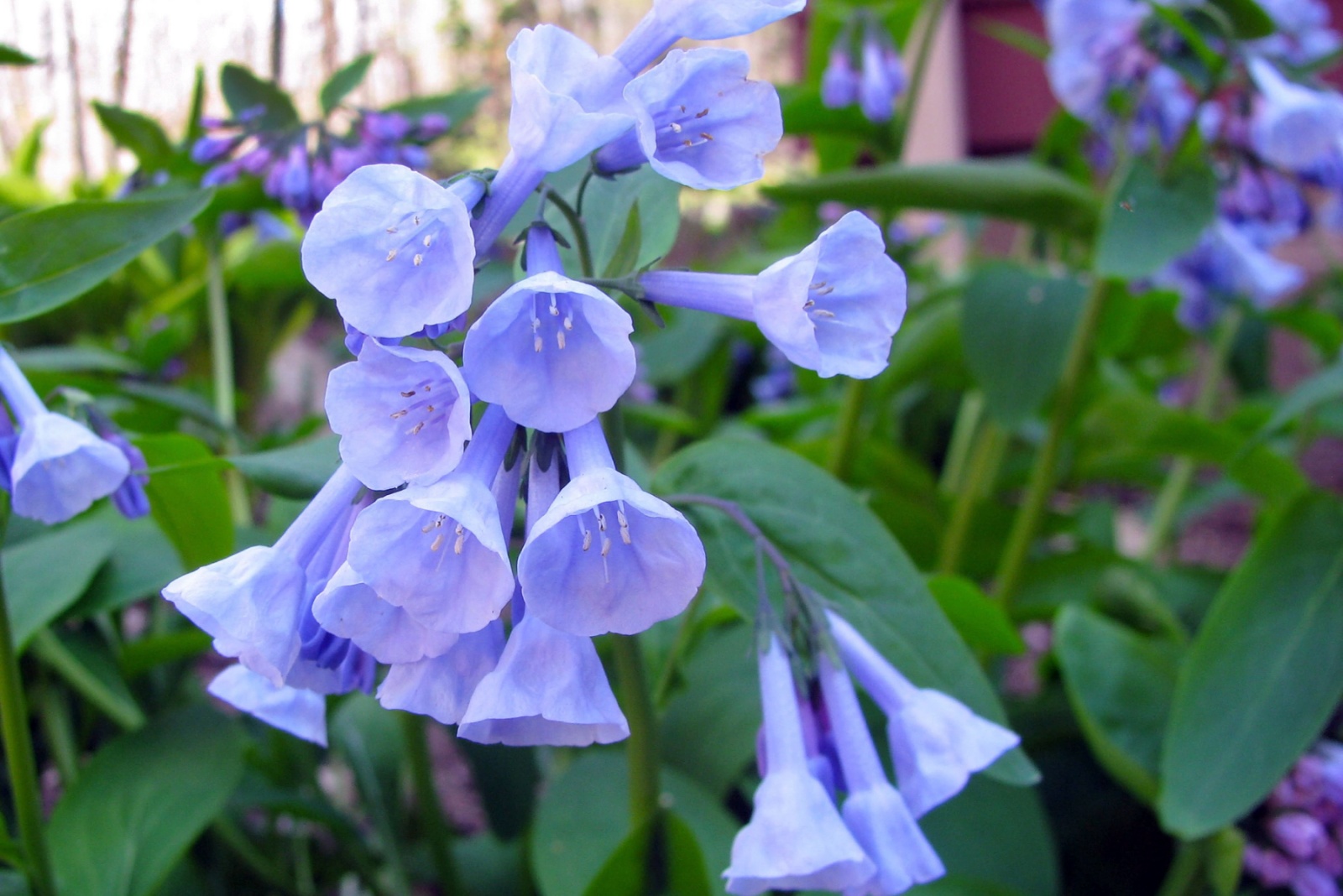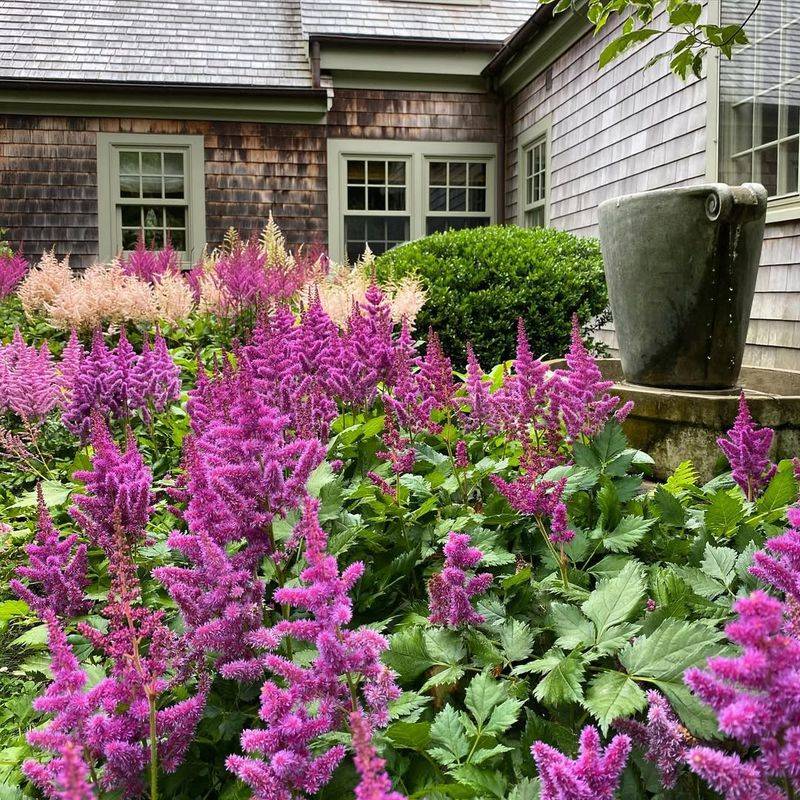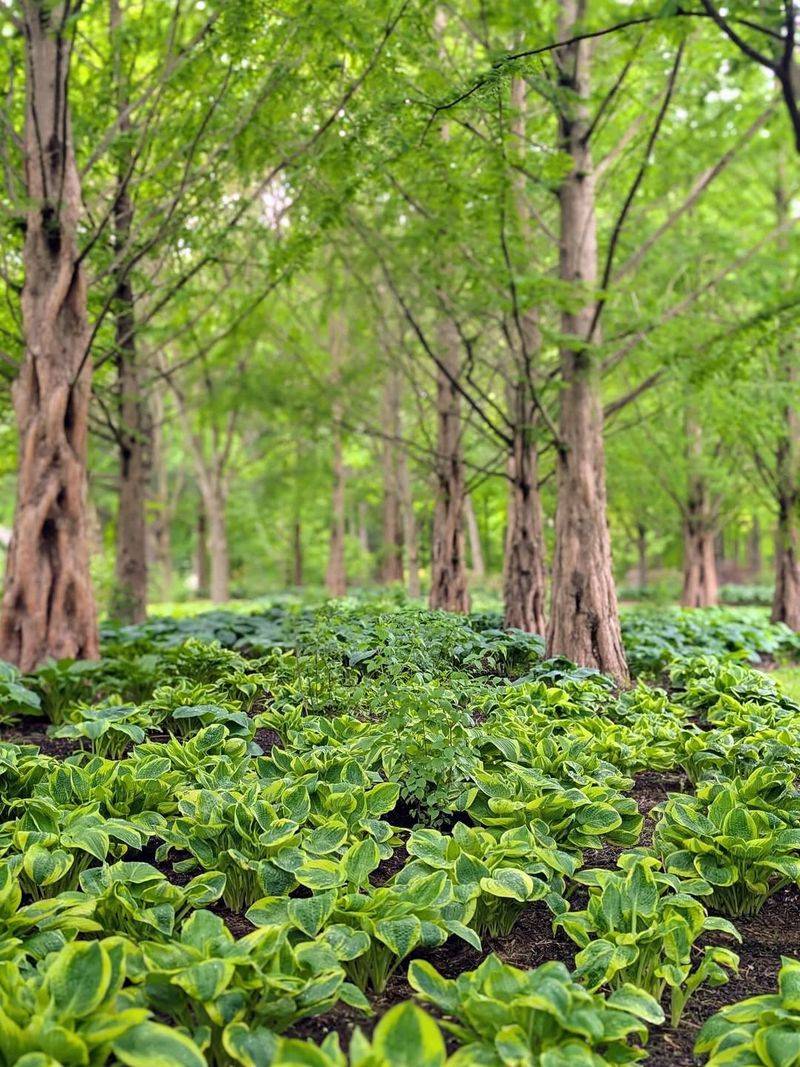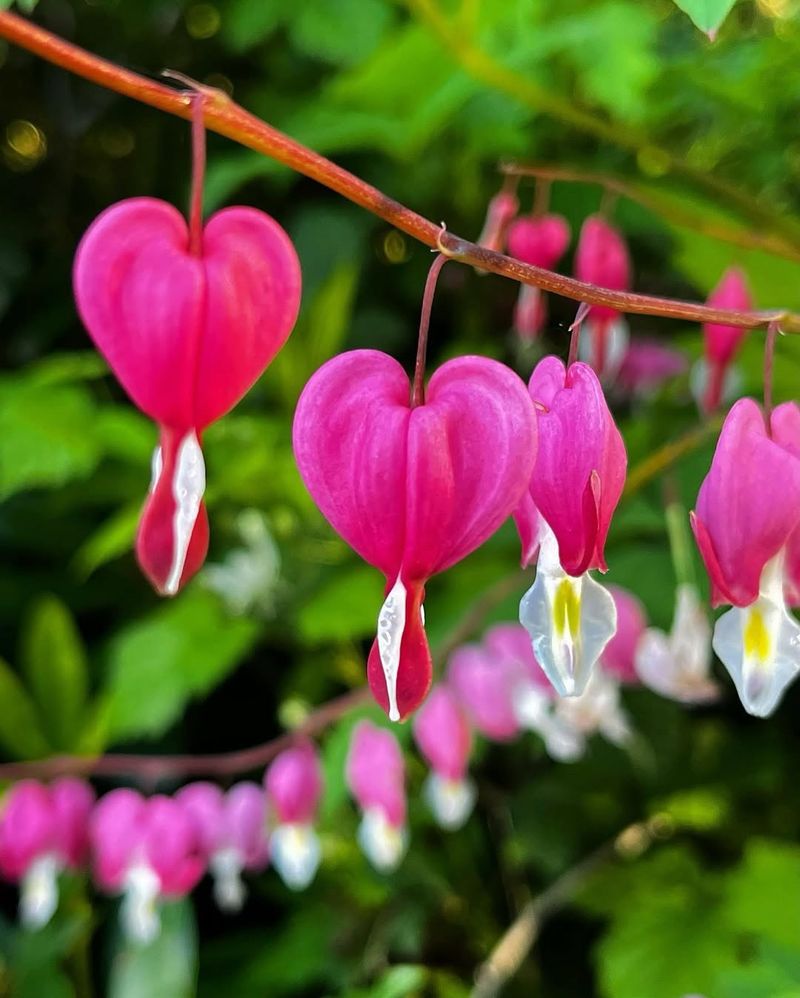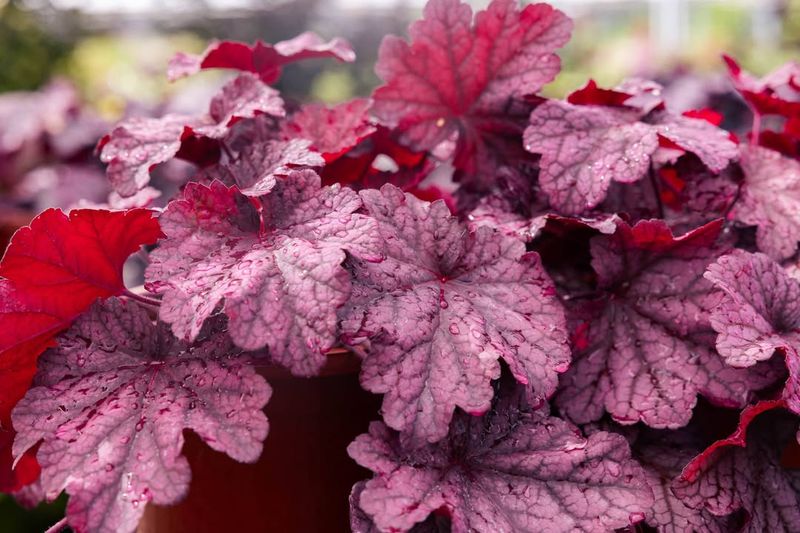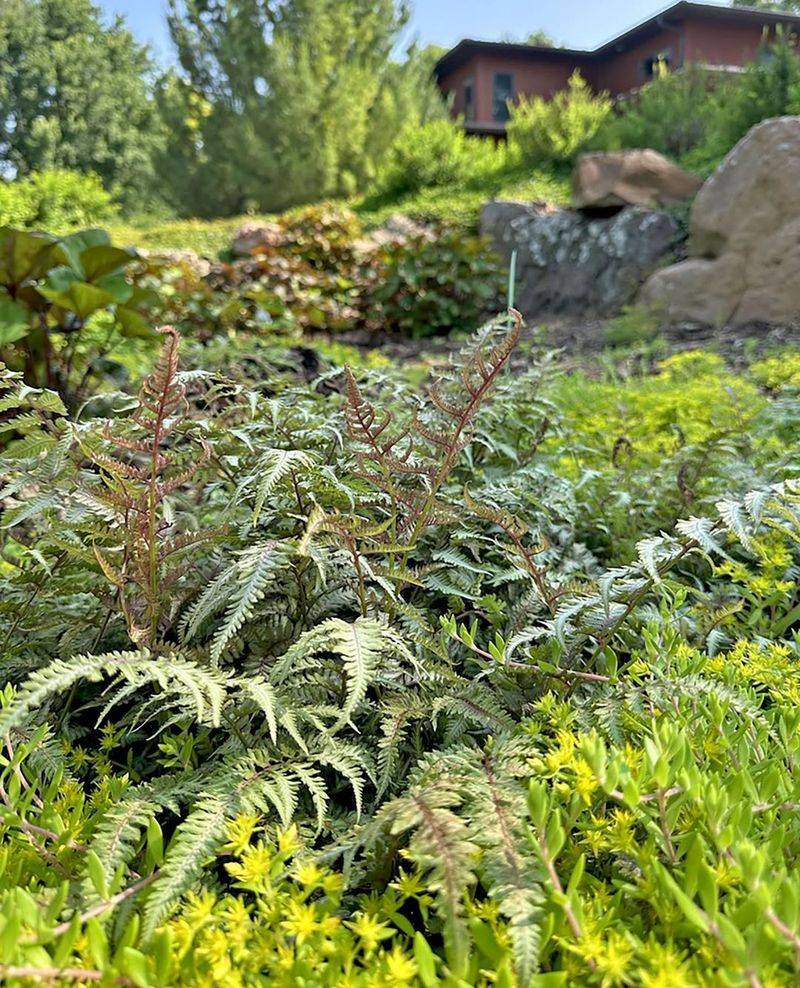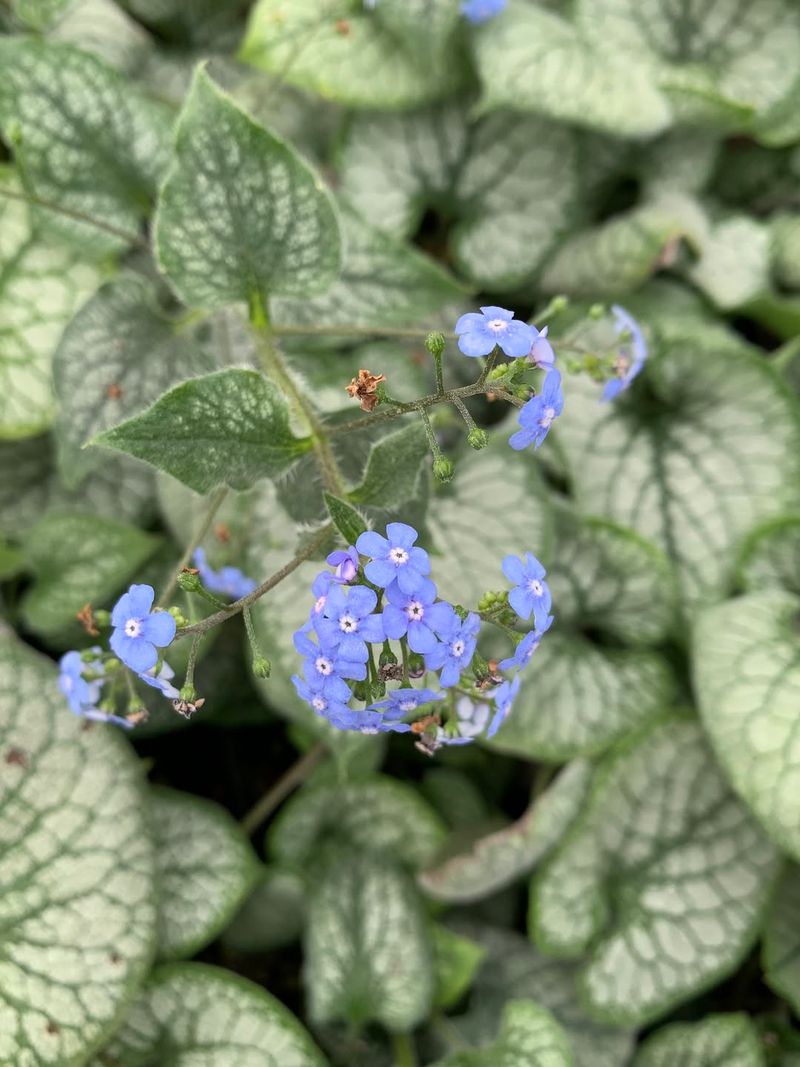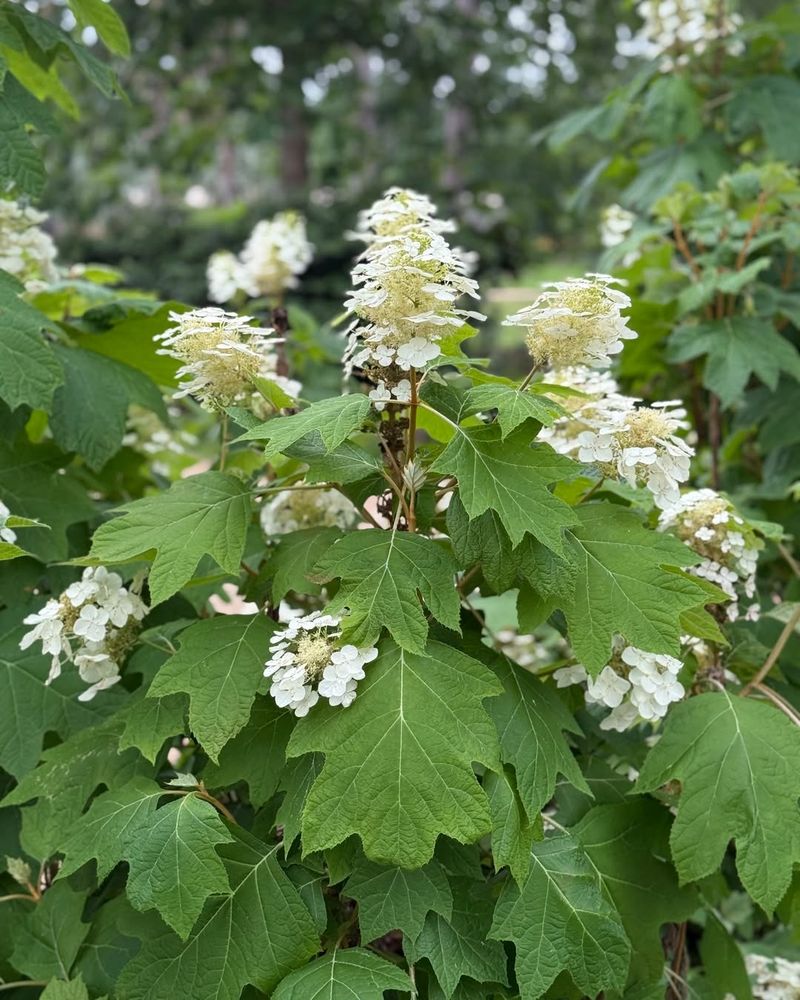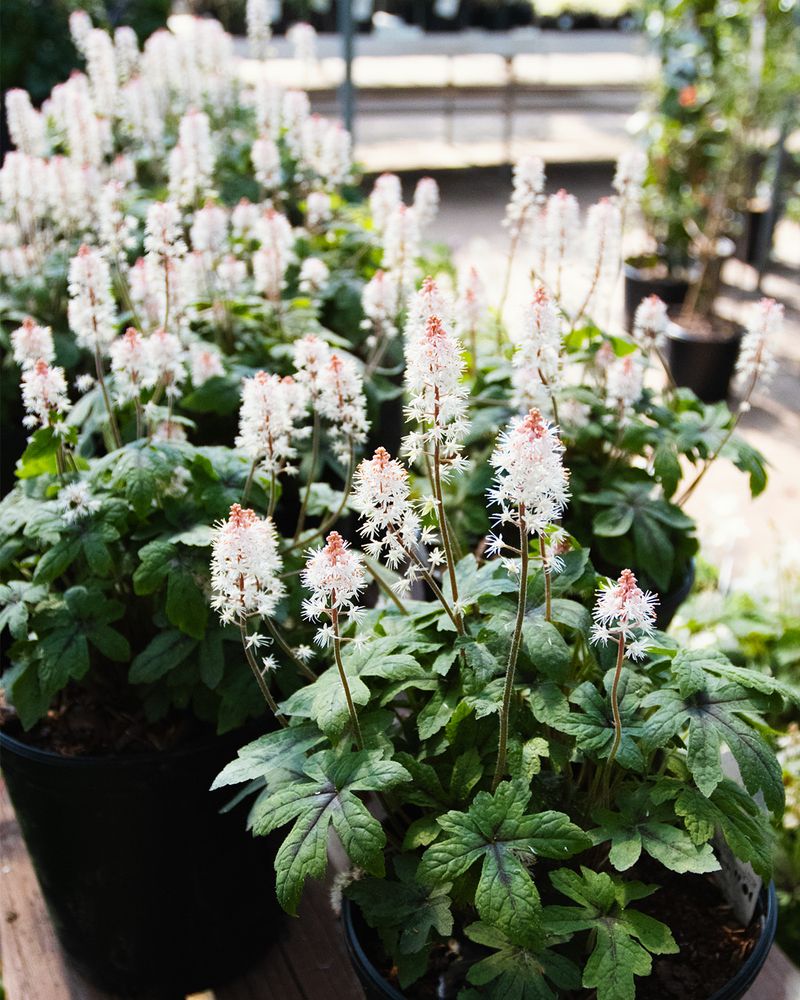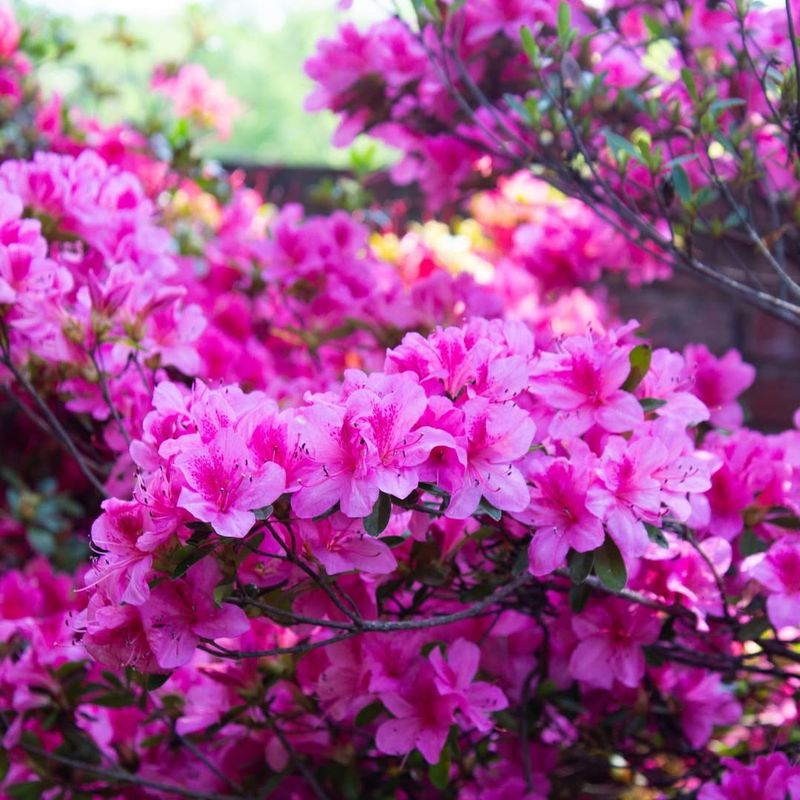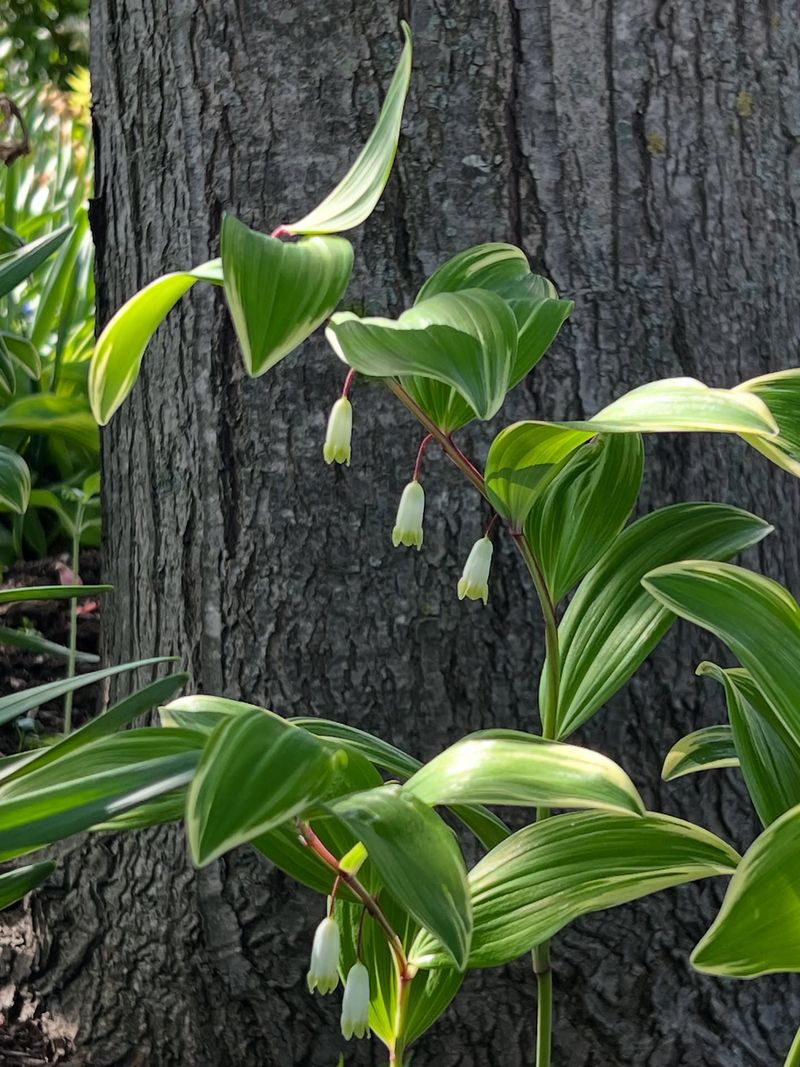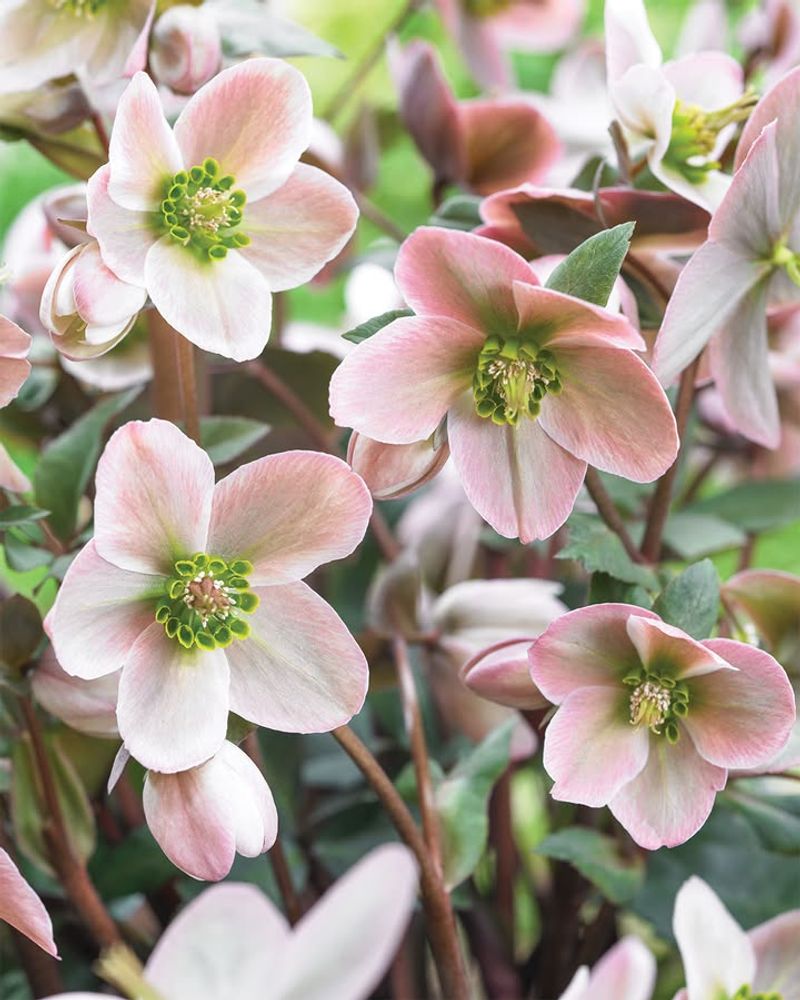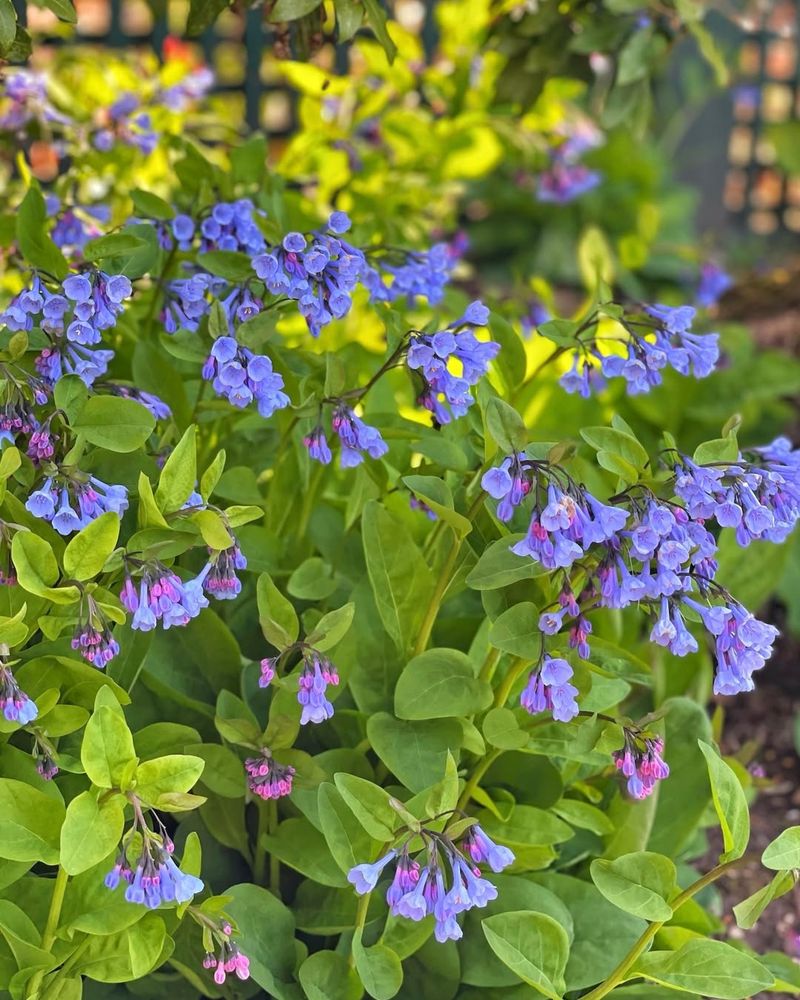Morning sun and gentle afternoon shade create a sweet spot in many Virginia yards, but knowing what to plant in an east-facing garden makes all the difference. This lighting is perfect for plants that love a soft sunrise but need protection once the day heats up.
With the right choices, these spaces can burst with color, texture, and season-long interest—without constant fuss. The key is selecting plants that naturally shine in this balanced light and Virginia’s unique climate.
1. Astilbe
Feathery plumes in shades of pink, white, and red make astilbe a showstopper from late spring through summer. Morning sunlight paired with afternoon shade creates perfect growing conditions for these moisture-loving perennials.
Virginia’s humid climate suits astilbe beautifully, especially when soil stays consistently moist. Plant them near downspouts or in naturally damp areas where they’ll flourish without extra watering.
Deer tend to leave astilbe alone, making it excellent for areas where wildlife browsing poses problems for other garden favorites.
2. Hosta
Bold foliage in countless patterns and colors brings year-long interest to shaded garden spots. From tiny miniatures to giant specimens, hostas offer incredible variety for every landscape design preference.
Morning light helps variegated varieties maintain their striking leaf patterns without burning delicate tissues. These hardy perennials tolerate Virginia’s winter cold and summer humidity equally well.
Slugs can damage leaves, but surrounding plants with crushed eggshells or copper tape provides effective protection. Hostas multiply over time, giving you extras to share or transplant elsewhere.
3. Bleeding Heart
Heart-shaped flowers dangling from arching stems create an enchanting springtime display that captivates every visitor. Delicate pink or white blooms appear in April and May, perfectly timed with Virginia’s spring awakening.
After flowering ends, the ferny foliage continues adding texture until summer heat causes dormancy. Pair bleeding hearts with later-blooming companions to fill gaps when they go dormant.
These woodland natives appreciate rich, well-draining soil amended with compost or leaf mold for best performance and longevity.
4. Coral Bells
Ruffled leaves in burgundy, lime, caramel, and silver provide stunning color contrasts throughout all four seasons. Tiny bell-shaped flowers on tall stems attract hummingbirds during summer months.
Virginia gardeners love coral bells because they tolerate both heat and cold while requiring minimal maintenance once established. Morning sun intensifies leaf colors without causing scorching damage.
Crown rot can occur in poorly drained soil, so plant coral bells in raised beds or amended areas where water doesn’t puddle after rain.
5. Japanese Painted Fern
Silvery fronds with burgundy midribs create an almost magical appearance in shaded garden areas. Unlike many ferns, Japanese painted varieties offer colorful foliage rather than just plain green.
These compact ferns reach only 12-18 inches tall, making them perfect for front-of-border placements or container combinations. They spread slowly through rhizomes, eventually forming attractive clumps.
Consistent moisture and rich organic soil help Japanese painted ferns achieve their most vibrant coloration and lush growth throughout Virginia’s growing season.
6. Brunnera
Forget-me-not flowers in sky blue blanket plants each spring, followed by heart-shaped leaves that remain attractive all season. Variegated selections with silver markings brighten darker garden corners exceptionally well.
Once established, brunnera tolerates dry shade better than many perennials, though it performs best with regular moisture. Virginia’s spring rains provide ideal conditions for vigorous growth.
Ground-covering habits suppress weeds naturally while creating textured layers beneath taller perennials and shrubs. Brunnera rarely suffers from pest or disease problems in home landscapes.
7. Oakleaf Hydrangea
Cone-shaped white flower clusters appear in early summer, gradually aging to pink and burgundy tones. Distinctive oak-shaped leaves turn brilliant red, orange, and purple each autumn.
Exfoliating cinnamon-colored bark provides winter interest after leaves drop, making this native shrub a true four-season performer. Morning sun encourages abundant flowering without stressing plants during hot afternoons.
Virginia’s native oakleaf hydrangeas adapt easily to various soil types and require less water than their big-leaf cousins once root systems establish firmly.
8. Foamflower
Bottlebrush-like flower spikes in white or pink rise above semi-evergreen foliage each spring. Virginia’s native foamflowers spread slowly, creating weed-suppressing ground covers in woodland settings.
Maple-shaped leaves often develop burgundy markings or veining that intensifies during cooler months. These tough perennials handle dry shade once established, though they prefer consistent moisture.
Combining foamflowers with spring bulbs creates layered interest, with flowers appearing just as daffodils and tulips finish blooming. Deer typically avoid foamflowers, leaving plants undamaged.
9. Azalea
Spectacular spring blooms in every color imaginable transform gardens into breathtaking displays. Native azalea varieties perform exceptionally well in Virginia’s climate and support local pollinators.
Morning sunlight promotes heavy flowering while afternoon shade prevents leaf scorch during summer heat waves. Acidic soil rich in organic matter creates optimal growing conditions.
Mulching with pine needles or shredded leaves maintains soil acidity and moisture levels that azaleas prefer. Shallow root systems benefit from consistent watering during establishment and drought periods throughout the growing season.
10. Solomon’s Seal
Gracefully arching stems lined with dangling white bell flowers create elegant spring displays. Blue-black berries follow flowers, attracting birds while adding late-season interest.
Virginia’s woodland natives, Solomon’s seal plants thrive in the exact conditions east-facing gardens provide naturally. They slowly colonize areas through underground rhizomes without becoming invasive.
Pairing Solomon’s seal with spring ephemerals and ferns creates authentic woodland garden aesthetics. These carefree perennials rarely require division, pest control, or special maintenance once happily situated.
11. Hellebore
Evergreen foliage and early blooms make hellebores invaluable for late winter and early spring color. Flowers in white, pink, purple, and green appear when little else blooms.
Leathery leaves remain attractive year-round, providing structure during dormant seasons when other perennials disappear. Deer and rabbits avoid hellebores due to toxic compounds in plant tissues.
Once established in Virginia gardens, hellebores self-sow moderately, creating natural drifts over time. Morning light encourages flowering while afternoon shade protects blooms from weather damage and extends display duration.
12. Virginia Bluebells
Clusters of pink buds open into sky-blue trumpet flowers each April, carpeting woodland areas with color. After blooming, plants go dormant by early summer, disappearing until next spring.
Native to Virginia’s moist woodlands, bluebells naturalize easily when conditions suit their preferences. Plant them with hostas or ferns that emerge later to fill spaces after bluebells fade.
Marking locations prevents accidental digging during dormancy. These spring ephemerals require no maintenance beyond occasional watering during extended droughts while actively growing and flowering beautifully each year.

